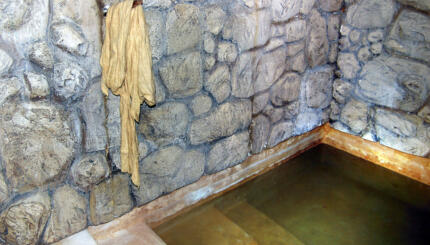Reprinted with permission from Maimonides’ Introduction to His Commentary on the Mishnah, translated and annotated by Fred Rosner, and published by Jason Aronson.
[Judah the Prince] then subdivided the treatises in Seder Tohorot (purities) and began with tractate Keilim (vessels). Its subject matter includes the enumeration of all the primary ritual defilements and that which is subject to defilement, as well as that which cannot become defiled so that when we later speak of things that defile we will know which are the things that are susceptible to ritual defilement and which are not.
After Keilim comes tractate Oholot (tents), and its subject matter deals with defilements conveyed by a corpse. This tractate is first because it deals with the highest degree of defilement. Following this is tractate Nega’im (plagues, leprosy) whose contents deal with the defilement of leprosy because a leper conveys defilement through a common enclosure [tent]. Thus, it is somewhat similar to the defilement of a corpse, as will be explained in its proper place.
After completing discussions of the defilements by a corpse and the like, he began to describe the subject of purification from the aforementioned, namely the red heifer. Thus after Nega’im, he placed tractate Parah (the red heifer). Having concluded the discussion of high degrees of defilement and the manner in which one may become purified therefrom, he speaks of lesser degrees of defilement, which require only the setting of the sun [for purification].
With your help, My Jewish Learning can provide endless opportunities for learning, connection and discovery.
He thus placed tractate Tohorot after Parah. It is called Tohorot (purities) using euphemistic language, because therein are described the laws of defilement. In addition, knowledge of defilements brings one to knowledge of purification therefrom. If someone would think that the reason for calling the name of the whole Order "Seder Tohorot" and the use of the same appellation for one of the tractates thereof Tohorot is incorrect we would answer no, it is not unusual for men of ideas to call a particular item by the name of the general category that includes it.
Having completed the high degrees of defilements and how purification therefrom can be effected and having spoken about lesser degrees of defilement, he then discusses the laws of cleansings therefrom. He, therefore, placed tractate Mikva’ot (ritual baths) after tractate Tohorot. He placed tractate Niddah (menstrual impurity) last, after all these degrees of defilement because it is not a general category of defilement that applies to all human beings. He, therefore, placed Niddah after Mikva’ot. It would have been appropriate to have tractate Zavim (unclean emissions) follow Niddah, but Makhshirin (what predisposes something to defilement) is given precedence over Zavim because Scripture gave it precedence, since the subject of Makhshirin is described in the portion Vayehi BaYom HaShemini (Leviticus 9:1), whereas that of Zavim is not mentioned until the portion of Metzorah (Leviticus 14:2).
After Zavim he placed tractate Tevul Yom (immersed at daytime), as it is stated in Scripture: "This shall be the law of him that hath an issue and of him from whom the flow of seed goeth" (Leviticus 15:32). All the aforementioned defilements involve the entire body, meaning that if a person comes in contact with any of them his entire body becomes defiled. And then he began to discuss the defilements of individual limbs by themselves. He, therefore, placed tractate Yadayim (hands) after Tevul Yom. After Yadayim is tractate Uktzin (plant stalks). It was set in last place because all its laws are deduced by reasoning, and have no fundamental root in the Torah.
And with this he completed the subdivision of the treatises in Seder Tohorot into twelve tractates. Thus, the sum total of all the tractates of the Mishnah is 61, and the number of chapters is 523.
Mishnah
Pronounced: MISH-nuh, Origin: Hebrew, code of Jewish law compiled in the first centuries of the Common Era. Together with the Gemara, it makes up the Talmud.


